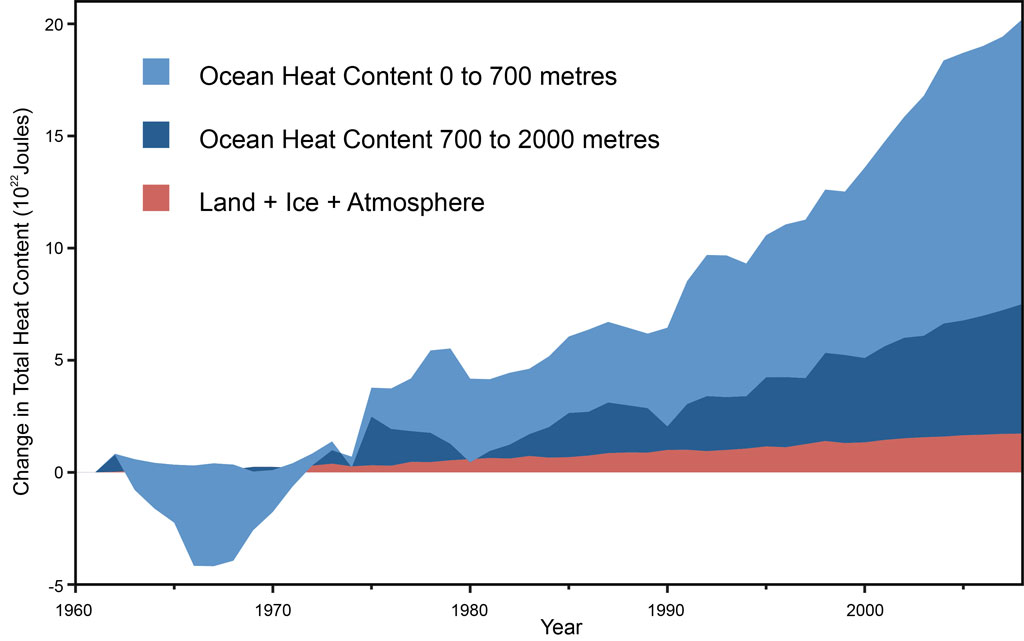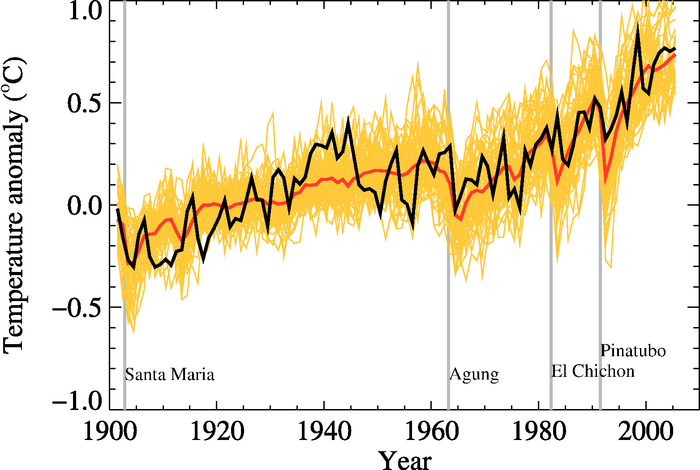 Arguments
Arguments
 Software
Software
 Resources
Comments
Resources
Comments
 The Consensus Project
The Consensus Project
 Translations
Translations
 About
Support
About
Support


Latest Posts
- Skeptical Science New Research for Week #51 2025
- What are the causes of recent record-high global temperatures?
- Fact brief - Are toxic heavy metals from solar panels posing a threat to human health?
- Emergence vs Detection & Attribution
- 2025 SkS Weekly Climate Change & Global Warming News Roundup #50
- Skeptical Science New Research for Week #50 2025
- The rest of the world is lapping the U.S. in the EV race
- Fact brief - Are electromagnetic fields from solar farms harmful to human health?
- Comparing climate models with observations
- 2025 SkS Weekly Climate Change & Global Warming News Roundup #49
- Skeptical Science New Research for Week #49 2025
- Climate Adam & Dr Gilbz - Paris Climate Agreement At 10: Did It Do Anything?
- Fact brief - Does the recent slowdown in Arctic sea-ice extent loss disprove human-caused warming?
- Why the chemtrail conspiracy theory lingers and grows – and why Tucker Carlson is talking about it
- 2025 SkS Weekly Climate Change & Global Warming News Roundup #48
- Skeptical Science New Research for Week #48 2025
- Consensus machines
- Just have a Think - How an African energy revolution could save ALL of us.
- A girl’s grades drop every summer. There’s an alarming explanation.
- 2025 SkS Weekly Climate Change & Global Warming News Roundup #47
- Fact brief - Are changes in solar activity causing climate change?
- Skeptical Science New Research for Week #47 2025
- Exploring newly released estimates of current policy warming
- Climate Adam - Why the Climate Crisis is a Health Crisis
- Super pollutants are trendy, but we should be careful how we use them
- 2025 SkS Weekly Climate Change & Global Warming News Roundup #46
- Skeptical Science New Research for Week #46 2025
- On the Gates climate memo
- Climate Adam - Climate Scientist responds to Bill Gates
- Five ways Joe Rogan misleads listeners about climate change
Archived Rebuttal
This is the archived Intermediate rebuttal to the climate myth "Akasofu Proved Global Warming is Just a Recovery from the Little Ice Age". Click here to view the latest rebuttal.
What the science says...
|
Akasofu's argument is based on magical thinking and curve fitting without any physical explanation. Climate changes must have a physical cause, for example the increased greenhouse effect. |
One of the most important concepts to understand when trying to grasp how the Earth’s climate works, is that every climate change must have a physical cause. For example, we know the increased greenhouse effect is creating a global energy imbalance that will cause the Earth's surface temperature to rise. Any alternative explanation has to identify why the increased greenhouse effect isn't causing the warming we expect based on fundamental physics, and why the climate change 'fingerprints' are consistent with the increased greenhouse effect.
For example, it’s not sufficient to say global warming is the result of “a natural cycle” – which cycle is causing the change? For example, is it due to the Earth’s orbital cycles around the Sun, which operate very slowly over periods of thousands of years? Is it changes in solar activity, which has on average remained flat and even declined slightly over the past 60 years? Is it ocean cycles, which shift heat between the oceans and air, and don’t cause the Earth to accumulate more heat?
A brand new scientific journal called Climate published a paper by Syun-Ichi Akasofu, a retired geophysicist and former director of the International Arctic Research Center at the University of Alaska-Fairbanks. Despite having a background in physical sciences, Akasofu made a very unphysical argument in that paper. He claimed that the current global warming is merely a result of the planet “recovering” from the Little Ice Age – a cool period (the cooling mostly isolated in Europe) that lasted between the years of about 1550 and 1850.
Problem – Akasofu didn’t identify any physical cause for this supposed ‘recovery.’ Instead he engaged in what’s known as “curve fitting,” in which you take data that is correlated to your desired graph and scale it to match, then argue you’ve proven that your data is the cause of the changes shown in that graph. In other words, it confuses correlation with causation. If I can take data regarding the number of pirates in the Caribbean and consumption of spaghetti in Ireland and make it fit the global temperature data, that doesn’t mean that pirates and Irish spaghetti are causing global warming. A physical cause must be identified.
Akasofu didn’t do that. He just roughly fit some ocean cycle data to the global temperature measurements and decided that a linear global warming trend was left over. He then declared that linear trend was the “recovery” from the Little Ice Age, and that it would continue indefinitely into the future, despite not knowing its cause.
Unfortunately the peer-review process isn’t perfect. It’s necessary but insufficient in separating the good from the flawed research. Sometimes a bad paper will slip through the cracks, whether due to a poor choice of reviewers, or the judgment of the journal editor. Akasofu’s paper was published in the very first edition of Climate, which caused great concern amongst its editorial staff (many of whom recognized the poor quality of the paper), and even caused one editor to resign from the journal.
Climate also published Nuccitelli et al. (2013), which debunked Akasofu's paper. Nuccitelli et al. (2013) identified the following fundamental flaws in Akasofu's argument.
1) Lack of physical mechanisms. As noted above, Akasofu did not identify any physical causes of the supposed Little Ice Age “recovery.” Long-term temperature changes are caused by global energy imbalances, caused by factors like an increased greenhouse effect.
2) Claim of a halt to present heating. Akasofu’s paper focused on the claim that global warming has “halted,” but studies that have accounted for the warming of the entire climate (oceans, air, ice, and land) have shown that if anything, global warming is accelerating.
Global heat accumulation data (ocean heating in blue; land, atmosphere, and ice heating in red) from Nuccitelli et al. (2012)
3) Curve fitting. Akasofu merely made his desired data match the global surface temperature measurements, but global climate models match the measurements better, and they’re based on actual physics.
Global mean near-surface temperatures from observations (black) and as obtained from 58 simulations produced by 14 different climate models driven by both natural and human-caused factors that influence climate in the 2007 IPCC report (yellow). The mean of all these runs is also shown (thick red line). Vertical grey lines indicate the timing of major volcanic eruptions.
4) Failure to consider many known influences on the Earth’s climate. We know that human emissions of greenhouse gases and other pollutants, changes in solar activity volcanic eruptions, and many other factors influence global surface temperatures. Failing to account for these known factors makes it impossible for Akasofu to have correctly identified the causes of global warming in the past, present, or future.
5) Misunderstanding carbon and climate. Akasofu argued that if the underlying rate of warming since the Little Ice Age has been steadily linear (which it hasn’t), then it couldn’t have been caused by human carbon emissions, which have accelerated. First of all, the relationship between carbon emissions and temperature isn’t a linear one (there’s a natural log involved). Second, this is a straw man argument, because nobody is claiming that carbon emissions are the only factor influencing global temperatures. The figure above shows how climate models expect global surface temperatures to have changed in response to all known factors, including carbon emissions, and they reproduce the observed changes accurately.
The problem with many anything but carbon (ABC) climate contrarian hypotheses like Akasofu’s is that they throw out what we know about how the Earth’s climate works. It’s fine to try and account the influences of ocean cycles – that’s what mainstream climate scientists are doing – but we’ve known how the Earth warms in response to the increased greenhouse effect for over a century. We also know that any long-term global warming must be caused by a global energy imbalance.
Any valid climate research has to work within that known framework. When you throw out everything we know about the Earth’s climate, you’re stuck making unphysical arguments based on nothing more than correlations and curve fitting, as Akasofu did. The problem for climate contrarians is that our existing climate framework is very solid. We understand the fundamentals about how the climate operates well enough to accurately reproduce the observed changes, based on solid, well-understood physical mechanisms like the increased greenhouse effect. That’s not about to get overturned by magical thinking and curve fitting.
Intermediate rebuttal written by dana1981
Update July 2015:
Here is a related lecture-video from Denial101x - Making Sense of Climate Science Denial
>
Updated on 2015-07-23 by MichaelK.
THE ESCALATOR

(free to republish)



























































